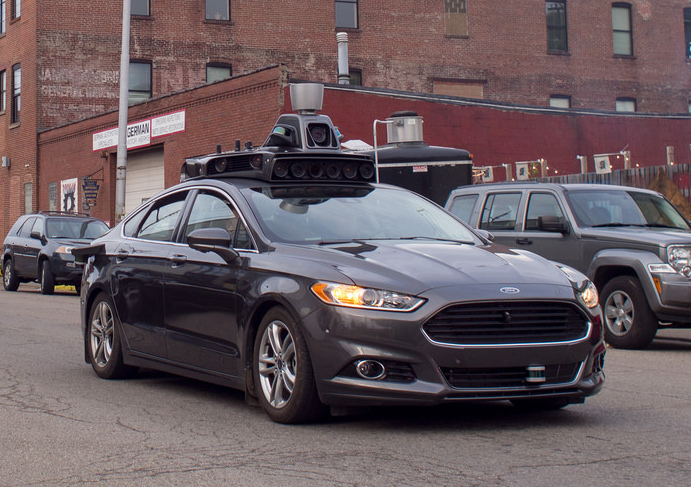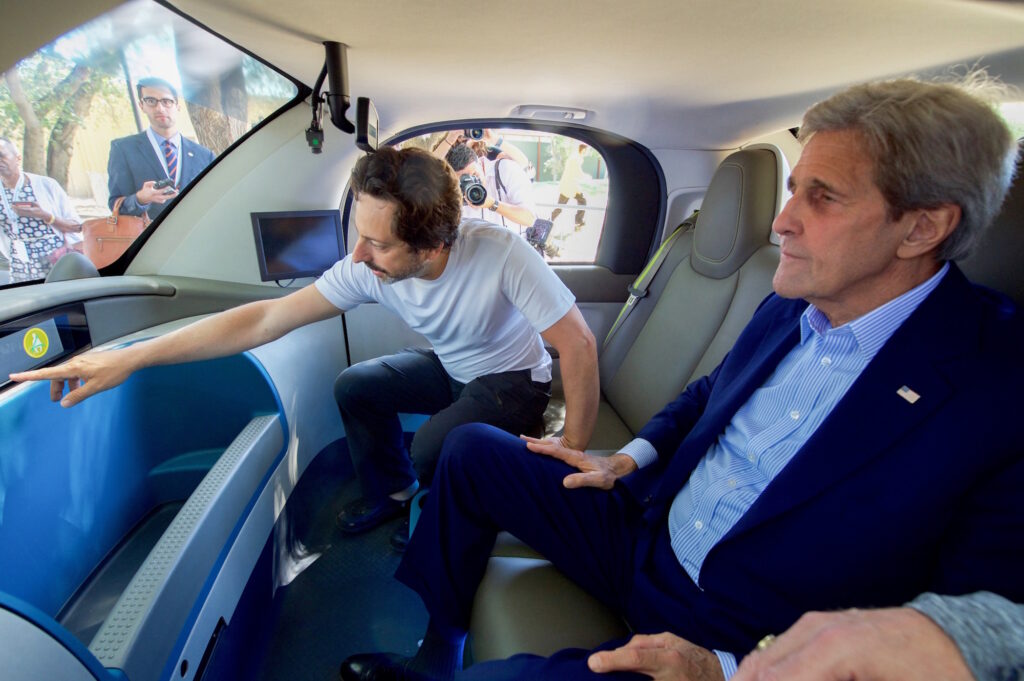Take two American states.
One symbolises leading edge technology and the digital frontier: California, the home state of Silicon Valley.
The other represents the heart of the American auto industry: Michigan, home to “Motor City”, Detroit.
This month, one of those states touched the brakes a little on driverless cars.
The other has gone foot to the floor on the accelerator…or, more accurately, enacted a new law that will allow road testing of driverless cars without pedals or a steering wheel.
Just days apart, there’s a new caution emerging in one state about driverless car development, while the other state is moving to speed it up.
Which state was which? And why is this happening?
Let’s take California first.
Up to now, the Golden State has been a pioneer of driverless development and was one of the first of a handful of US states to allow road trials.
But recently, state authorities told Uber to call a halt to its driverless taxi experiments in San Francisco.

Uber had failed to acquire the necessary permits for its latest test runs.
To make matters worse, a driverless Uber vehicle was filmed skipping a red light just moments before a pedestrian tried to cross the road.
To date, Uber has carried on its testing despite the order to stop.
Meanwhile, there have been cooling off signals about driverless from one of the biggest names in Silicon Valley and biggest players in autonomous vehicles: Google.
Spinning out its driverless operations into a new company, called Waymo, Google made it clear it was “not a car company … not in the business of making better cars”.
After eight years of development, its focus now will be on partnering with car companies to make use of the driverless tech it has created so far – starting with a Fiat-Chrysler partnership.
So, what about Michigan?
Back east, the state governor Rick Snyder signed what has been described as “the most permissive law” in America on driverless vehicles.
The state where you’ll find the headquarters of Ford, Chrysler and General Motors is hoping to leap to the very front of driverless development.
Subject to vehicles passing stringent checks, Michigan will allow road trials of cars and trucks without the usual manual controls and designed to be completely autonomous.

The only human involvement will be as a passenger and deciding where to go.
What the difference in the news from California and Michigan reveals is the push-and-pull problems with driverless development.
On the one hand, there seems to be enough economic potential to persuade car makers to push ahead with development – and for regulators around the world to permit testing and incentivise investment.
On the other hand, there’s a pull back because of risk.
California’s move against Uber was because of the risk of unregulated tests to human safety, particularly in towns and cities.
And for all the excitement about driverless, voices are starting to emerge asking whether the technology is ready for urban environments. Are humans – particularly other road users – well-enough prepared to adapt to new motoring practices?
“Our technology is too unsophisticated – the sensors that are being used in many of the vehicles just aren’t quite good enough to allow the vehicle to take complete control,” Professor Ann Williamson of the University of New South Wales warned early in 2016.
“At the moment, we’re asking drivers to just sit passively and wait until something happens and then [the car] asks them to just take over really quickly and that’s something human beings don’t do very well.”
There’s an economic pull-back too.
While there may be future potential, investing in the hope of future profits can make company boards nervous – particularly if that investment-in-hope has been going on for almost a decade already, as in Google’s case.
Google’s creation of Waymo seems to show that it wants to earn some money now from what it has learned and built over the last decade.
These push-and-pull forces aren’t going to go away.
The more miles driverless vehicles clock-up, the more accidents, incidents and talking points there will be.
The more millions that are spent on developing new technology, the greater the pressure to start to make a return on that investment.
The development of driverless cars has far from stalled.
But the California-Michigan differences are just a little sign of what we can expect in future. There will be more public debate about how far and how faster we’re going in 2017.

